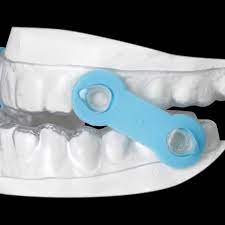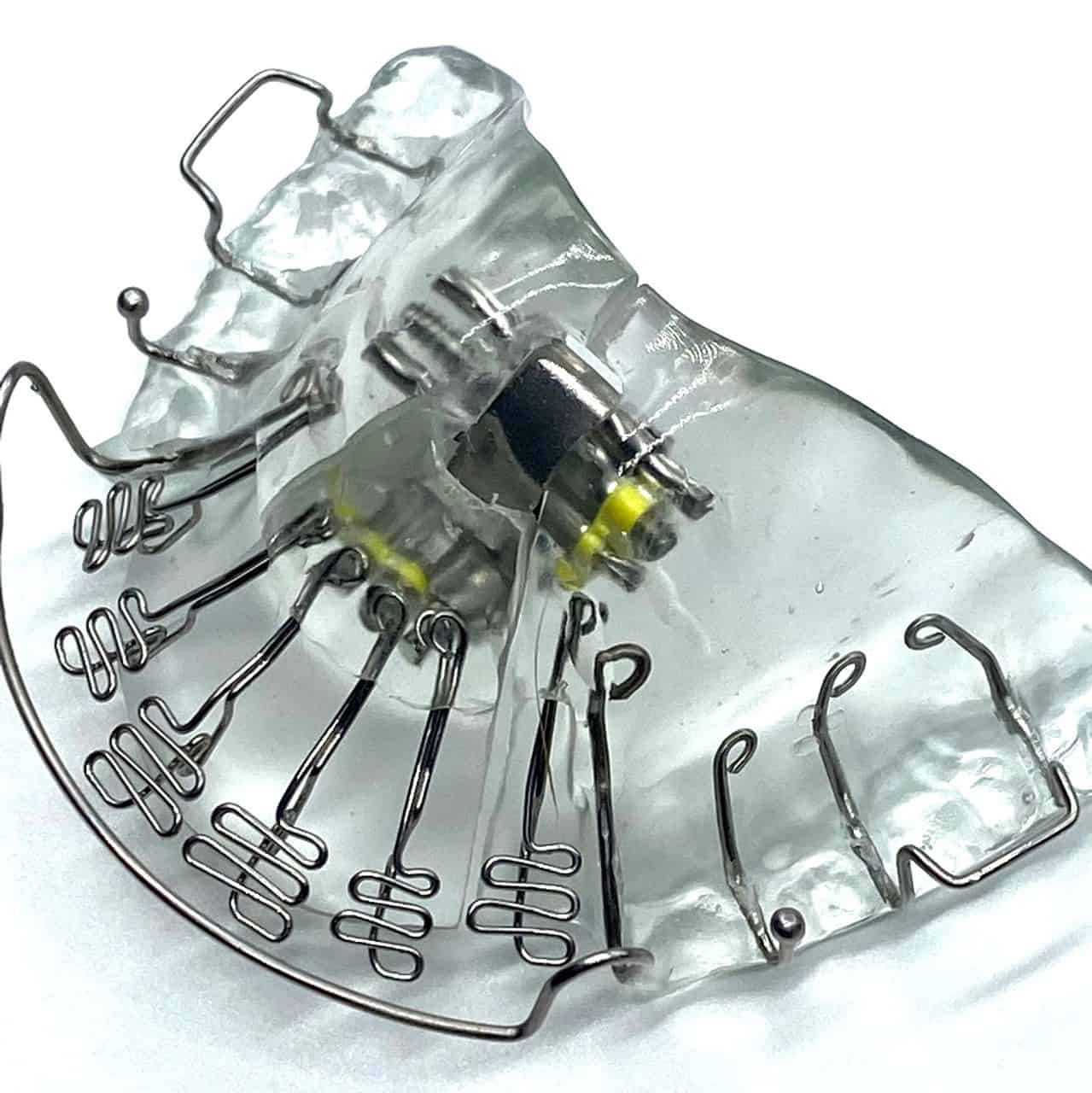Sleep Apnea Dental Appliances
If you are suffering from sleep apnea, you have likely looked into several treatment options and you do not want a CPAP or BIPAP machine. Can a dental sleep apnea appliance do the trick or is it better to get a surgery for sleep apnea? There is a possibility you may need both, but lets compare, sleep apnea surgery, to CPAP and dental sleep appliances.
MRA Dental Sleep Appliance
The gold stardard for dental sleep appliances is the MRA mandibular repositioning appliance. There are 100s of different designs of the MRA, but they all work the same. There is an upper and lower piece of plastic the patient bites into. When the patient bites into the appliance it forces the lower jaw into a more forward position. By “repositioniong” the lower jaw forward, the tongue rests further away from the throat and the airway becomes more open.

DNA Appliance and Homeoblock Device
There are many advanced dental appliances that can cure sleep apnea if worn for 1-2 years. The DNA appliance and Homeoblock device are two. The DNA is technically an adult palate expander used to treat adults who clench their teeth, have TMJ pain, and sleep apnea. Most candidates also have crooked teeth and mouth breathing habits. The expander slowly increases the size and shape of the jaws by stimulating new bone growth. More space improves airflow and breathing, and teeth alignment. The DNA and Homeoblock are worn for 1-2 years during sleep after which sleep apnea can be corrected. Success rates are 80+ percent for people who are compliant and patient.
Cost is usually a major drawback with dental appliances. The MRA appliances cost $3000 and are often not covered by insurance. MRA appliances need to be worn forever and they may last 3-5 years at best. MRA appliances will cause the teeth to shift over time. A bad bite may result and cause the need for braces or jaw surgery. DNA and Homeoblock appliances need to be worn at night for 1-2 years and that is a long time. The advantage of the DNA appliance is that sleep apnea should be cured. So that means no more CPAP, dental appliances or anything.

Vivos DNA Appliance
Surgery for Sleep Apnea
- UP3 surgery (UPPP or Uvulopalatopharyngoplasty)
- Genioglossal advancement surgery (Tongue advancement surgery)
- Pillar implants or rigid polyester implants inserted into the soft palate to prevent it from flapping around during snoring
Dr. Adams recommends trying non-surgical procedures before going into sleep apnea surgeries. The DNA is capable of growing the jaw structures forward (upper and lower jaws i.e., the maxilla and mandible.) Forward or anterior growth produces the same effect as tongue advancement surgery with the additional benefit of increasing the volume of the mouth and expanding the palate. In this way the DNA corrects to root cause of sleep apnea whereas the sleep apnea surgeries ties the tongue and hyoid bone upwards and forward. The UP3s surgery clears some flabby tissue in the throat but the DNA appliance tones this tissue and can tighten it up.
 703-712-1053
703-712-1053 